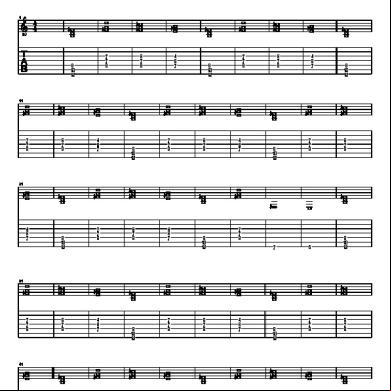Energy Management Of Electrical Equipment 5f3e6m
This document was ed by and they confirmed that they have the permission to share it. If you are author or own the copyright of this book, please report to us by using this report form. Report 3b7i
Overview 3e4r5l
& View Energy Management Of Electrical Equipment as PDF for free.
More details w3441
- Words: 593
- Pages: 14
By Kiran.R M.Tech (CEM)
•
• •
•
Understanding how your facility’s power factor affects your electricity cost is an important part of an energy management program. Low power factor can be expensive and inefficient. Many utility companies charge an additional fee if a facility’s power factor is less than an established value. Low power factor also can reduce the electrical system’s distribution capacity by increasing current flow and causing voltage drops
o
Power factor involves the relationship between two types of power: Working Power and Reactive Power.
o
Most loads in electrical distribution systems are inductive, which means that they require an electromagnetic field to operate.
o
Inductive loads require two kinds of current:
Working Power – performs actual work of creating heat, light, motion, etc.
Reactive Power – sustains the electromagnetic field.
PF measures how effectively electrical power is being used.
Working power is expressed in kilowatts or kW (one kilowatt = 1,000 watts). This s as kilowatt-hours on your electric meter. The total capacity required is expressed in kilovoltamperes, or kVA (Electrical equipment such as generators and transformers is rated in kVA). Power factor is the ratio of the working power to the total capacity required to provide this power — or kW/kVA
Examples of Electric Equipment and Their Power Factor Different types of electric equipment have different Power Factors and consequently different efficiencies and current requirements:
Name of Equipment Lightly loaded induction motor Loaded induction motor Neon-lighting equipment
Power Factor Percent .20
.80 .30 - .70
Incandescent lamps
1
All types of resistance heating devices (e.g. toaster, space heater)
1
5
Power Triangle
Working Power (kW)
a b
c
Reactive Power (kVAR)
Apparent Power (kVA)
1. Real Power or Working Power (kW) - Measured 2. Reactive Power (kVAR) - Measured 3. Apparent Power (kVA) - Calculated 2
2
Pythagorean Theorem: c = a + b 2
2
kVA = kW + kVAR
2
2 6
Calculating Power Factor
kVAh = kWh2 + kVARh2
Average PF over month Power Factor
=
kWh kVAh
Metered kW x 0.95 PF
=
kW billed
7
Example 1: January 2006 Billing Monthly meter readings: 1,625 kW,
762,600 kWh, 846,600 kVARh
762,600 kWh2 + 846,600 kVARh2 = kVAh kVAh = 1,139,425 762,600 kWh PF = 1,139,425 kVAh
=
66.9 %
1,625 KW x 0.95 .669
=
2,308 KW billed 8
•
•
Power factor can impact your energy costs. Improving the power factor can improve efficiency, often resulting in significant economic savings. Benefits of Improving Power Factor
Reduced energy costs Lower transmission and distribution losses in your electrical system Higher and more quality voltage regulation Increased capacity available to serve actual working power requirements Reduced non-productive loading on the system
•
Places the cost burden more on those customers causing the problem rather than all rate payers.
•
Improves system efficiency by reducing losses
•
Enhances system operation and reliability.
•
Increases system capacity capabilities.
•
Minimize operation of idling or lightly loaded motors.
•
Replace standard motors as they burnout with energy efficient motors sized correctly.
•
Install capacitors in the circuit .
•
ive and Active power factor correction
•
ive and Active filtering of network
•
Accepting non-sinusoidal voltage / current in the system.
Work with a qualified electrical contractor or engineer to study your application.
•
Different strategies of correction, static versus bulk.
•
Inverters, variable speed drives, and solid state soft starters will affect design.
•
Power factor can be affected by harmonics, which can only be addressed with filters
•
• •
•
Understanding how your facility’s power factor affects your electricity cost is an important part of an energy management program. Low power factor can be expensive and inefficient. Many utility companies charge an additional fee if a facility’s power factor is less than an established value. Low power factor also can reduce the electrical system’s distribution capacity by increasing current flow and causing voltage drops
o
Power factor involves the relationship between two types of power: Working Power and Reactive Power.
o
Most loads in electrical distribution systems are inductive, which means that they require an electromagnetic field to operate.
o
Inductive loads require two kinds of current:
Working Power – performs actual work of creating heat, light, motion, etc.
Reactive Power – sustains the electromagnetic field.
PF measures how effectively electrical power is being used.
Working power is expressed in kilowatts or kW (one kilowatt = 1,000 watts). This s as kilowatt-hours on your electric meter. The total capacity required is expressed in kilovoltamperes, or kVA (Electrical equipment such as generators and transformers is rated in kVA). Power factor is the ratio of the working power to the total capacity required to provide this power — or kW/kVA
Examples of Electric Equipment and Their Power Factor Different types of electric equipment have different Power Factors and consequently different efficiencies and current requirements:
Name of Equipment Lightly loaded induction motor Loaded induction motor Neon-lighting equipment
Power Factor Percent .20
.80 .30 - .70
Incandescent lamps
1
All types of resistance heating devices (e.g. toaster, space heater)
1
5
Power Triangle
Working Power (kW)
a b
c
Reactive Power (kVAR)
Apparent Power (kVA)
1. Real Power or Working Power (kW) - Measured 2. Reactive Power (kVAR) - Measured 3. Apparent Power (kVA) - Calculated 2
2
Pythagorean Theorem: c = a + b 2
2
kVA = kW + kVAR
2
2 6
Calculating Power Factor
kVAh = kWh2 + kVARh2
Average PF over month Power Factor
=
kWh kVAh
Metered kW x 0.95 PF
=
kW billed
7
Example 1: January 2006 Billing Monthly meter readings: 1,625 kW,
762,600 kWh, 846,600 kVARh
762,600 kWh2 + 846,600 kVARh2 = kVAh kVAh = 1,139,425 762,600 kWh PF = 1,139,425 kVAh
=
66.9 %
1,625 KW x 0.95 .669
=
2,308 KW billed 8
•
•
Power factor can impact your energy costs. Improving the power factor can improve efficiency, often resulting in significant economic savings. Benefits of Improving Power Factor
Reduced energy costs Lower transmission and distribution losses in your electrical system Higher and more quality voltage regulation Increased capacity available to serve actual working power requirements Reduced non-productive loading on the system
•
Places the cost burden more on those customers causing the problem rather than all rate payers.
•
Improves system efficiency by reducing losses
•
Enhances system operation and reliability.
•
Increases system capacity capabilities.
•
Minimize operation of idling or lightly loaded motors.
•
Replace standard motors as they burnout with energy efficient motors sized correctly.
•
Install capacitors in the circuit .
•
ive and Active power factor correction
•
ive and Active filtering of network
•
Accepting non-sinusoidal voltage / current in the system.
Work with a qualified electrical contractor or engineer to study your application.
•
Different strategies of correction, static versus bulk.
•
Inverters, variable speed drives, and solid state soft starters will affect design.
•
Power factor can be affected by harmonics, which can only be addressed with filters










